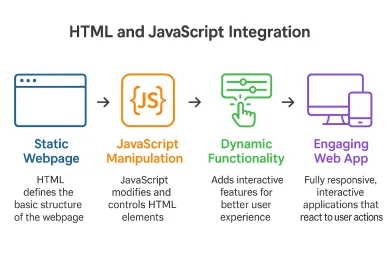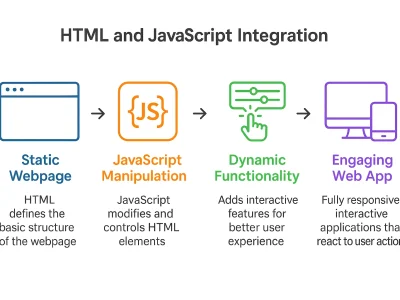Introduction
Let’s imagine a smarter world wherein computers analyse with humanlike precision, learning through circumstances and making expert decisions for humans. Deep learning, a modernized branch of artificial intelligence (AI), envisions redesigning the world with its technological power. The power of deep learning can be well understood by analyzing its ecosystem, i.e. a digital brain with numerous layers of interdependent nodes, namely neural networks, which duplicates information processing by human minds. Further, deep learning meticulously analzyes the undetected patterns in data, its respective consequences and automates tasks by filtering out data. From analyzing medical scans to designing personalized playlists, deep learning is in vogue to automate all sectors.
Why does deep learning matter, and who should leverage its power? Deep learning aims to expand the scope for all business owners, professionals and learners globally. Industrialists, professionals and students should exploit the power of AI to foster smarter and scalable industries, thoroughly explore career options and stay ahead of the curve. At Tutedude, we are dedicated to guiding young, dynamic learners to make the most out of this revolutionary technology.
Do you want to understand the real-world applications of deep learning in various industries? Let’s begin!
Healthcare and Medical Diagnosis
Let’s take you to a parallel world where doctors discover advanced diseases in patients before their onset, saving the patient from progression and adverse consequences. Deep learning, the powerful branch of machine learning, is making this dream the new normal, saving numerous people globally. With the strategic integration of Convolutional Neural Networks and Artificial Intelligence (AI), these systems examine the medical scans, namely CTS or ultrasounds and detect advanced diseases such as lung cancer or Parkinson’s with about 90% accuracy. In 2022, research analyzed data processing by deep learning systems, which refines medical imaging by incorporating multilayered data sets, improving the accuracy of diagnosis and designing the treatment plan. For example, companies like Aidoc have developed AI-powered medical scan systems that detect key findings, swiftly helping healthcare practitioners in emergency cases.
Autonomous Vehicles and Smart Transportation
Autonomous vehicles are revolutionizing transportation by using deep learning to perceive their surroundings and make real-time driving decisions. Equipped with advanced sensors and neural networks, self-driving cars can detect obstacles, recognize traffic signals, and safely navigate complex routes with minimal human intervention. This technology promises safer roads, reduced traffic congestion, and a future where transportation is more efficient and accessible for everyone.
Self-Driving Cars: Object detection, lane keeping, and path planning
Can you imagine a car bypassing hurdles effortlessly, navigating you cautiously through busy streets? Well, with the power of deep learning, we can yet again turn this dream into reality. Deep learning empowers this vision in autonomic vehicles. CNNS mobilises self-driven cars that meticulously detect hurdles, recognise traffic signals, and accordingly plan routes. For instance, as per an industry report, Waymo achieved 99.99% accuracy in detecting roadway hurdles. These tech-driven systems process data from cameras and Light Detection and Ranging (LIDAR) technology, facilitating defined lane-keeping and avoidance of collision.
Traffic Prediction and Route Optimization
Further, deep learning enhances transportation facilities. Recurrent Neural Networks (RNNS) analyse traffic patterns, mitigating traffic congestion in cities by 15% in towns with the help of Google Maps’ AI-driven routes.
Drone Navigation and Delivery Systems
Drone navigation systems rely heavily on deep learning for delivery purposes. For instance, Amazon’s Prime Air drones leverage neural networks to navigate safely through complicated airspaces. Do you think this technology is pioneering? Considering India’s population and crowded cities, AI can automate communication and deliveries. Can you imagine a world with only smart vehicles, moving faster and saving time? Deep learning is here to transform transportation, making it brighter and safer, paving the path to a connected, self-reliant future.
Natural Language Processing (NLP)
With advancements in NLP, businesses can now understand and respond to human language more accurately than ever before. This breakthrough has paved the way for smarter customer service solutions. Conversational AI, powered by deep learning, enables chatbots and virtual agents to provide instant, personalized support—reshaping how companies interact with their customers and enhancing user satisfaction.
Real-time Language Translation
Can you imagine talking to an AI chatbot in your native language? Yet again, deep learning is here to bridge the gap between human and machine communication. AI chatbots, the modern customer communication channels, are usually multilingual. Transformer prototypes, such as the ones aiding Google Translate, help in real-time translation, i.e. 95% accuracy in well-known languages, thereby making the world well-connected.
Sentiment and Intent Analysis
Furthermore, NLP deals with sentiment and intent analysis. Organizations resort to RNNS to comprehend the pattern of customer reviews and detect emotions with more than 85% accuracy.
Speech Recognition & Voice-Activated Systems (Alexa, Siri, etc.)
These analyses help businesses design their market strategies with precision and reliable data sets. Speech recognition systems, namely Alexa and Siri, substantially rely on deep learning to process voice commands, tackling numerous accents and tones with utmost precision. What do you think about the impact of humanlike conversations with chatbots? Millions of people across India and the globe resort to NLP-powered chatbots to resolve their queries. Deep learning empowers several NLP applications, which in turn are remodelling customer communication and making interactions more innovative and more efficient across all industries.
Customer Service and Conversational AI
Conversational AI is transforming customer service by enabling instant, intelligent support through chatbots and virtual agents. Powered by deep learning, these systems understand natural language, resolve queries efficiently, and provide personalized experiences around the clock. As a result, businesses can handle high volumes of customer interactions, improve satisfaction, and reduce operational costs.
AI-powered Chatbots for Instant Support
Imagine: A confused customer intends to make a big purchase from your website, and due to the quick resolution by your virtual agent, he immediately purchases the products. Further, imagine innumerable customers visiting you daily and buying your products without hesitation. That’s the magic of deep learning, i.e. the branch of AI driving modern customer communication channels. A transformer model powers AI-driven chatbots and provides instant resolution support, handling more than 75% of queries without human intervention.
Virtual Agents and Voice Assistants
For instance, virtual agents and voice assistants like Google Assistant discern native languages and tones, advancing tailored responses across multilingual sectors.
Automated Customer Interaction Workflows
Furthermore, deep learning facilitates digital customer communication workflows. Neural networks meticulously understand the queries of the customers to process and resolve them proficiently, enhancing customer experience by around 30%, as evident in the usage of Amazon’s support systems. These chatbots learn from experiences and customer behaviour, like humans. Can you imagine a regional business venture flourishing globally and effectively managing numerous clients? Integrating conversational AI in businesses improves user experience, efficiency, and minimises costs, making it the ideal choice for a modern customer experience.
Facial Recognition and Surveillance|
Facial recognition technology, powered by deep learning, is revolutionizing security and authentication across industries. From unlocking smartphones and verifying identities at airports to enhancing surveillance in smart cities, these systems analyze unique facial features with remarkable accuracy. Social media platforms also use facial tagging to organize photos, while advanced surveillance solutions help law enforcement monitor public spaces and improve safety, making our environments more secure and connected.
Biometric Authentication (Mobile Phones, Airports)
In today’s digitalized world, unlocking phones with a glance isn’t trendy anymore. However, what technology supports facial recognition features that transform secure social communication channels? CNNS empower biometric authentication with companies such as Apple and its Apple Face ID feature, securing a false positive rate of 1 in 10,00,000 for unauthorized users, implying unprecedented accuracy.
Advanced Surveillance and Public Safety
Furthermore, as per a recent study, deep learning fortifies surveillance systems, analyzing footage and suspicious patterns to regulate crimes in smart cities by around 20%.
Facial Tagging on Social Media Platforms
Social media and photo-oriented platforms such as Google Photos use facial tagging to identify and sort the respective individuals in the images. Will the world be better if AI enables swift recognition and improved security? AI-powered facial recognition is reshaping industries across the globe, strengthening security and making social communication more instinctive.
Cybersecurity and Threat Intelligence
We can’t fathom the power of deep learning until we understand the interplay of its elements behind the scenes. For instance, what if an individual’s attempt to deceive security systems is evaded by invisible layers of impermeable security shields? Neural networks meticulously examine financial transactions or customer behaviour, focusing on critical issues before the customer makes any financial transaction. AI-powered security systems in Mastercard payment portals or Google usually depict 90% accuracy in detecting fraud.
Dynamic security mechanisms, driven by AI algorithms, defend against probable security threats while securing networks. Suppose an Indian e-commerce platform is secured 24*7, making it the leader in its industry. With the magic of deep learning and a resilient, proactive security strategy, businesses and users can foster a sense of mutual trust and faith while making financial transactions.
Entertainment and Content Personalization
A customised music playlist catered to the movies and artists of your interests? Not just another dream, isn’t it? Typically, the recommended for you section of our Netflix profile is the perfect instance for understanding the role of deep learning in the entertainment industry. With the power of neural networks, these platforms revitalise recommendations, enriching the user experience by 30%.
Likewise, in the gaming industry, AI designs flexible Non-player character (NPC) behaviour and propagates extensive procedural worlds, as witnessed in titles such as No Man’s Sky. Furthermore, generative adversarial networks (GANs) power deepfake technology, generating humanlike synthetic media for movies. How far do you think AI can expand the scope of the entertainment industry? Deep learning is here to modernise media by effortlessly automating personalisation and enhancing creativity, making every relationship more innovative.
Smart Cities and IoT Integration
Picture a city wherein the traffic is regulated even during peak hours. Yet again, deep learning, along with IoT (Internet of Things), is here to transform our cities, making them smarter and more efficient. Neural networks help in predicting traffic flow management by analyzing sensor data. For instance, Singapore’s Green Link Determining System (GLIDE) has modernized urban traffic management by reducing congestion by 15%.
Forecasting energy use assists power grids in reducing environmental waste by over 10%, as ostensibly in Toronto’s smart grid system. Do you think AI-powered machines can transform the globe into a smarter and more sustainable place to live? The strategic integration of deep learning can help us design smart cities and technologize the concept of urban living for humans.
Robotics and Industrial Automation
What if you enter a warehouse and find robots organizing heavy packages uncomplicatedly, while human minds can focus on what matters more? Well, deep learning is transforming this idea into reality, reducing the efforts of human labour. For instance, Amazon warehouses, with the help of an efficient robotic system, advanced their profits and performance by more than 20%. Furthermore, in the medical industry, robot-assisted surgeries are bringing in a wave of success, as they accentuate precision by 20%. Moreover, smart home devices such as thermostats, powered by AI, curtail energy use by 15%. How far can deep learning powered robots take us? This ultra-powered machine learning branch redefines the use of robots while reorienting industries and redesigning how humans live.
Financial Services and Algorithmic Trading
Hypothetically, if we live in a world powered by AI-driven finance tools wherein transactions can be carried out faster than we blink, this branch of machine learning with neural networks empowers recurring trading transactions, with AI-powered tools boosting corporate profits by 30%. Furthermore, neural networks enhance credit risk projections, leading to the mitigation of loan defaults. Most importantly, banking deceit systems effortlessly detect incongruous customer behaviour and patterns to avert losses. For instance, systems such as Wells Fargo swiftly detect inconsistencies in customer communication, shielding the industry from significant losses. The core feature of these systems lies in their early detection feature, which fosters the finance sector and paves the path for upgraded risk evaluation and security, in addition to extraordinary ultraprecision.
Conclusion: Shaping a more efficient tomorrow
Deep learning is kindling a radical change, thereby redesigning all the sectors from finance, healthcare to customer service. By empowering mobility, improving fraud detection, and boosting creativity in the entertainment industry, neural networks are driving innovation. It is predicted that AI could significantly contribute, $450-500 billion, to India’s GDP in 2025. Moving forward, reforms such as quantum AI pledge faster processing time, while open source platforms liberalise access, aiding startups. However, standard regulations and protocols should be implemented to tackle ethical issues, i.e. data privacy and prejudice. As per a study by Nasscom, AI is playing a crucial role in creating an extraordinary India, as it is the 2nd largest with an AI talent pool globally. The majority of Indian professionals resonate career growth with AI skills development. How do you intend to AI-proof your career? Join our comprehensive machine learning courses at affordable fees to steer your career growth towards the future. Join us and our mission to transform India’s young innovators into global leaders.
Please bookmark this blog for reading or share it with your fellow learners/AI enthusiasts!





